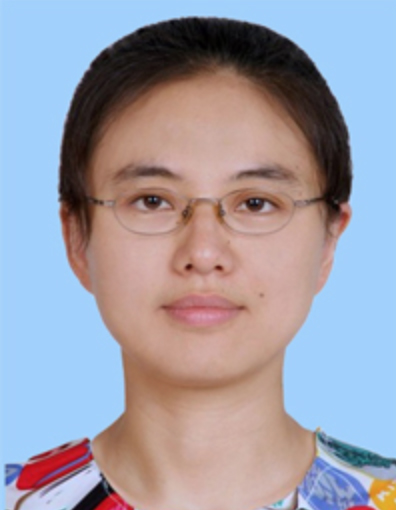|

Ping Chen, Ph.D, Prof.
Member of the Youth Innovation Promotion Association of CAS
Epigenetic regulation of higher-order chromatin structure
E-mail: chenping(at)moon(dot)ibp(dot)ac(dot)cn, Tel: 010-64856269
Fax: 010-64888023, Zip code: 100101
Biography & Introduction
1998.9-2002.6 in Chemistry, Wuhan University, China, B.Sc.
2002.9-2005.6 in Analytical Chemistry, Wuhan University, China, M.Sc.
2005.10-2009.6 in Biomolecular Chemistry, University of Nottingham, UK, Ph.D.
2009.9-2011.12 Institute of Biophysics, Chinese Academy of Sciences, Assistant Professor
2011.12-2014.8 Institute of Biophysics, Chinese Academy of Sciences, Associate Professor
2014.9-present Institute of Biophysics, Chinese Academy of Sciences, Professor
Research Interest
In eukaryotic cells, genomic DNA is highly packaged into chromatin to fit inside the nucleus. The accessibility of DNA is dependent on the packing density of chromatin fibers. It has been clear that the plasticity of and the dynamics of higher-order chromatin compaction are key regulators of transcription and other biological processes inherent to DNA.Although the structure of nucleosomes, the fundamental repeating unit of chromatin, is clear, there is still much discussion on the higher-order levels of chromatin structure. Elucidating just how a nucleosomal array can be compacted into higher-order chromatin structures is central to understanding the dynamics of chromatin structure. We have developed the chromatin in-vitro reconstitution and structural analysis system with techniques including EM/Cryo-EM, AUC, single-molecule(sm)-magnetic tweezers, FRET/sm-FRET to investigate the structure of 30-nm chromatin fibers, their structural plasticity/dynamics and epigenetic regulations. Using our established in-vitro chromatin assembly assay and structural analysis techniques, we have successfully determined the 3D cryo-EM structures of 30-nm chromatin fibers reconstituted in vitroin the presence of linker histone H1 at resolution of about 11 Å, which clearly show a histone H1-dependent left-handed twist of the repeating tetra-nucleosomalstructural units (Science, 2014).In the meanwhile, we have investigated the effect of histone variant H2A.Z and H3.3 on chromatin structure and gene regulation, and show that H3.3 plays a critical role in enhancer and promoter regions to open chromatin structure and activate gene transcription (Genes Dev. 2013; Nucleus, 2014). It will be of particular interest for us to further investigatethe molecular mechanism on the establishment and dynamic regulation of higher-order chromatin structure, including the 30-nm chromatin fiber and heterochromatin, and their correlation with gene regulation.
Selected Publications
Zhouliang Yu, Xiang Zhou, Wenjing Wang, Wenqiang Deng, Junnan Fang,Hao Hu, Zichen Wang, Shangze Li, Lei Cui, Jing Shen, Linhui Zhai, Shengyi Peng, Jiemin Wong, Shuo Dong, Zengqiang Yuan, Guangshuo Ou, Xiaodong Zhang, Ping Xu, Jizhong Lou, Na Yang,Ping Chen, Rui-Ming Xu, and Guohong LI. Dynamic phosphorylation of CENP-A at Ser68 orchestrates its cell cycle-dependent deposition at centromeres.Dev. Cell. 32(1), 68-81. (2015)
Ping Chen, P. Zhu and G.H. Li. New insights into the helical structure of 30-nm chromatin fibers.Protein Cell, (2014) 5, 489-491
F. Song*,Ping Chen*, D.P. Sun, M.Z. Wang, L.P. Dong, D. Liang, R.M. Xu, P. Zhu and G.H. Li. Cryo-EM study reveals a left-handed double helical structure of 30 nm chromatin fiber twisted by tetra-nucleosomal units.Science, (2014) 344, 376-380 (* co-first author)
Ping Chen*, Y. Wang* and G.H. Li. Dynamics of histone variant H3.3 and its coregulation with H2A.Z at enhancers and promoters.Nucleus,(2014) 5, 1-7.
Ping Chen*, J.C Zhao*, Y. Wang*, H.Z Long, D. Liang, L. Huang, Z.Q. Wen, W. Li, X. Li, H.L. Feng, H.Y. Zhao, P. Zhu, M. Li, Q.F. Wang and G.H. Li. H3.3 actively marks enhancers and primes gene transcription via opening higher-ordered chromatin.Genes Dev, (2013) 27, 2109-2124
Ping Chen*, J.C. Zhao*, and G.H. Li. Histone variants in development and diseases.J Genet. Genomics. (2013) 40, 355-365
D.P Sun, F. Song, L. Huang, K. Zhang, G. Ji,Ping Chen*and P. Zhu*. In vitro assembly and electron microscopic analysis of 30 nm chromatin fibers. Prog. Biochem.Biophys, (2013) 40, 739-747 (* co-corresponding author)
G. Yuan, B. Ma, W. Yuan, Z. Zhang,Ping Chen, X. Ding, L. Feng, X. Shen,S. Chen, G.H. Li, and B. Zhu. Histone H2Aubiquitination inhibits the enzymatic activity of H3 lysine 36 methyltransferases.J. Biol. Chem,(2013) 288, 30832-30842.
C.P. Liu, C.Y. Xiong, M.Z. Wang, Z.L. Yu, N. Yang,Ping Chen, Z.G. Zhang, G.H. Li, R.M. Xu.Structure of the variant histone H3.3–H4 heterodimer in complex with its chaperone DAXX. Nat. Struct.Mol. Biol, (2012) 19,1287-1292
C. Wang,J.Shen, Z.Yang,Ping Chen, B.Zhao, W.Hu, W.Lan, X.Tong, H.Wu, G.H.Li, C.Cao.Structural basis for site-specific reading of unmodified R2 of histone H3 tail by UHRF1 PHD finger.Cell Research, (2011) 21,1379-1382
Ping Chen, C.L. Evans, J.D. Hirst and M.S. Searle.Structural insights into the two sequential folding transition states of the PB1 domain of NBR1 from Φ value analysis and biased molecular dynamics simulations.Biochemistry, (2011) 50, 125-135
Ping Chenand G.H. Li. Dynamics of the higher-order structure of chromatin.Protein Cell, (2010) 1, 967-971
Ping Chen, J. Long and M.S. Searle.Sequential barriers and an obligatory metastable intermediate define the apparent two-state folding pathway of the ubiquitin-like PB1 domain of NBR1.J. Mol. Biol, (2008) 376, 1463-1477
Ping Chen, H.H. Liu, C. Ran, Z.L. Zhang, D.W. Pang, Z.X. Xie, H.Z. Zheng, Z.X. Lu. Visualized investigation of yeast transformation induced with Li+ and polyethylene glycol.Talanta, (2008) 77, 262-268
|